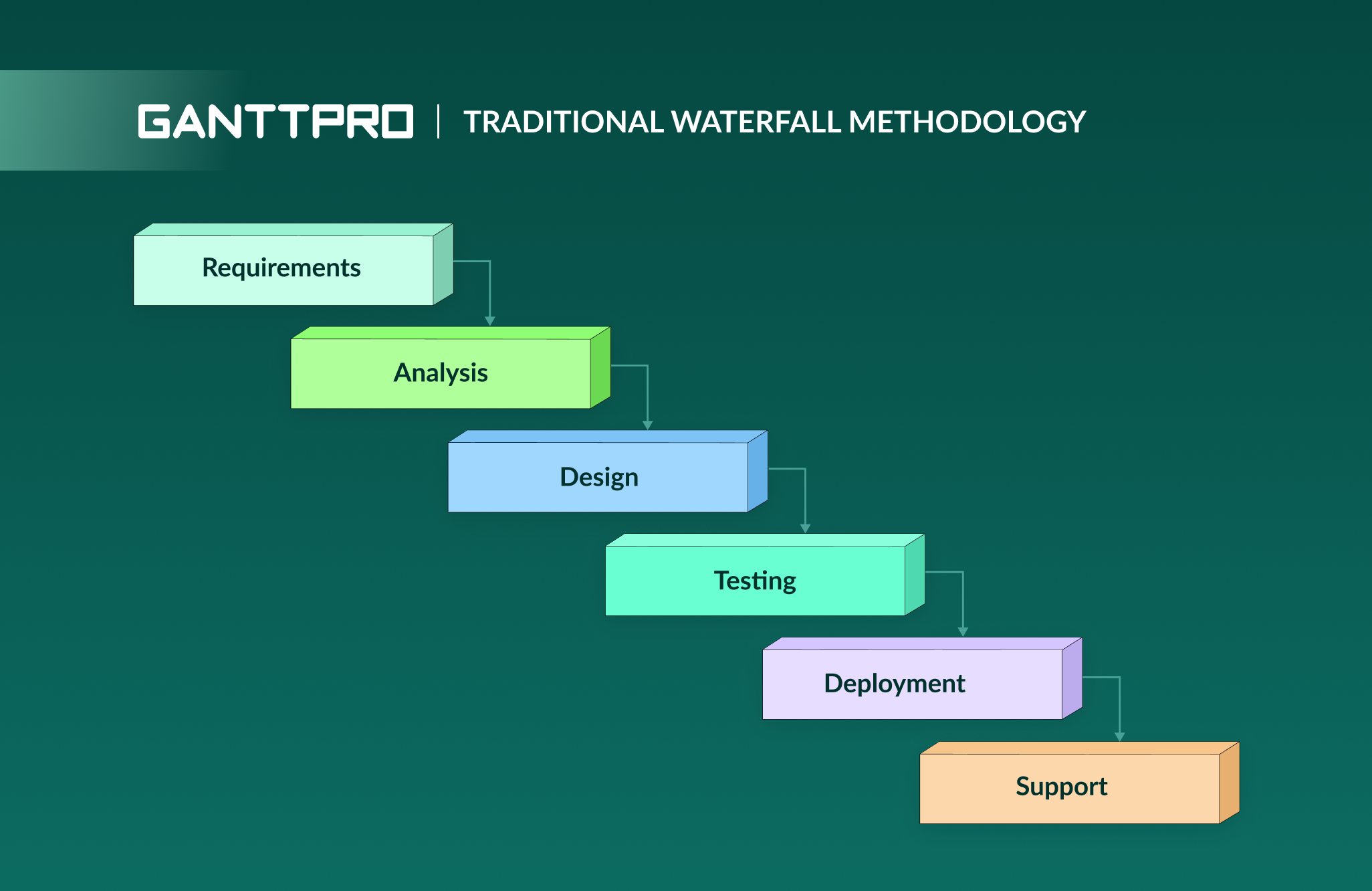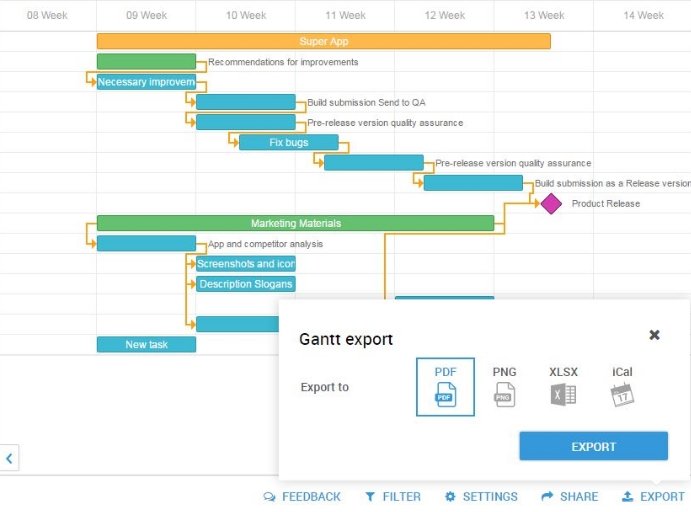What Should We Know About Traditional Waterfall Methodology

What is the best way to develop software? There should be several, right?
Actually, Waterfall and Agile are the most prominent methods.
We have recently described what Agile management methodology is and what Program Evaluation and Review Technique is, so it’s time to clarify all important points about Waterfall. Actually, you are able to use a PERT chart or a Gantt Chart template which may help you to visualize Waterfall methodology steps.
It’s up to you what to choose. We just want you to be informed about the popular model to compare it with Agile and make a decision about what you think is the best. This article will assist you in making this choice.
What is Waterfall development methodology?
There is a common Waterfall model definition. In general, Waterfall software development methodology is a sequential design process for project management.
As each of the methodology stages is completed, the developers can move on to the next step. The key point about the Waterfall design methodology is that there’s no chance for changes or errors, so your project outcome and a detailed plan must be set in the beginning.
Nobody knows who was the author of the Waterfall project methodology. The method was probably inherited by software developers from other industries and enterprises. Some sources mention Winston W. Royce with the first formal Waterfall testing methodology description in the article from 1970.
Waterfall methodology for all: general overview
Project managers prefer to use the methodology:
- If there is a clear picture of what the final product should be.
- If customers won’t have possibilities to change the project’s scope once it has begun.
- If the concept and definition are the keys to success (but not speed).
- If there are no ambiguous requirements.
Waterfall methodology project management phases
There is a general Waterfall model phases description. The model’s life cycle consist of 6 phases:
Requirements
The basement of any development process where all the requirements are gathered.
Analysis
When all requirements are gathered and documented, it’s time to analyze whether they are valid or not.
Design and construction
This stage may contain implementation, development, and coding processes.
Testing phase
At this stage, the responsible specialists test software and detect errors. It’s crucial here to make sure the product meets all the customer’s requirements.
Installation/ deployment
Installation is a phase when the product is implemented according to all requirements. Some testing processes may take place at this stage.
Support and maintenance
The final product is delivered to the customer. Maintenance and support are put into place. If everything is ok, the product continues to work as designed.
The role of product managers in the Waterfall methodology
The role of any product manager in the methodology is to create the requirements and foresee all pertinent questions.
These requirements must be given as complete as possible because the team works with the research and design on the initial stages. That’s why the efforts of product managers are much heavier at the beginning of the project.
How to create strong requirements?
Let’s say, your goal is to develop the address book using Waterfall project management methodology. Here is the approximate list of product requirements (in order of priority):
- Customers should be able to create new contacts.
- They should be able to view the contacts.
- They should have the abilities to import contacts from other programs.
- They should be able to add pictures.
- They should have the possibility to email their contacts from the address book.
Why project and product managers prefer to use Waterfall methodology?
Here we’ve combined the main advantages of the Waterfall project management methodology and combined them into 6 points.
- The model is simple and easy to use.
- As the methodology is quite rigid, it’s easy to manage it because every phase consists of a review process and specific deliverables.
- The phases do not overlap. They are processed and completed one at a time.
- Waterfall software development methodologies are good for small projects that contain clear requirements.
- Relying on the method Waterfall, your customers know what to expect. They’ll understand an idea of the cost, size, and timeline for their projects.
- If your company has employee turnover, the strong documentation allows for a minimal project impact.
What problems can you face using the Waterfall methodology?
Despite all the strong points listed above, we can find some Waterfall disadvantages:
- A high percentage of uncertainty and risk. If you find a requirement error or need to change something, your project has to be started from the beginning with a new code.
- When your product is on the testing stage, it is not easy to go back and change something that is unclear and not well thought out in the concept phase.
- You cannot solve some essential problems, using Waterfall for object-oriented and complex projects. It is also not a good idea to use it for long and ongoing projects.
- The method isn’t appropriate for the requirements that have the high risk of changing.
- Customers can be not satisfied with the delivered product. As all tasks and deliverables are based on documented requirements, customers may not see what will be delivered until it’s almost finished. It can be difficult to change something by that time.
The difference between Waterfall and Agile methodologies
Various options, different methods, and schools of thoughts… but what to choose?
It looks like a separate topic for discussion. However, to understand the fundamental difference, you can look at this brief description:
Waterfall project methodology is:
- one big sequential project.
- a process with clearly defined requirements upfront.
- structured.
- for situations without changes.
- internal.
Agile methodology is:
- flexible.
- a small project (or many of them).
- highly collaborative.
- best for those who want continuous improvements.
- the best to involve customers.
- a process in which requirements are expected to change.
Iterative Waterfall methodology with GanttPRO
It will be easy to choose the right methodology with the help of Gantt charts that represent the tasks in the form of bars.
These bars demonstrate the predicted start and the end date of the task and its current state. You can try online management tools GanttPRO to start using Gantt charts in your project.

Learn more about Gantt Charts opportunities here:
As you can see, both models have their strengths and weaknesses. Everything depends on your project. Would you like to change it rapidly? If so, choose Agile. If you know exactly what you need, then choose the benefits of Waterfall methodology.
And don’t forget and feel free to add your results to our comments.
